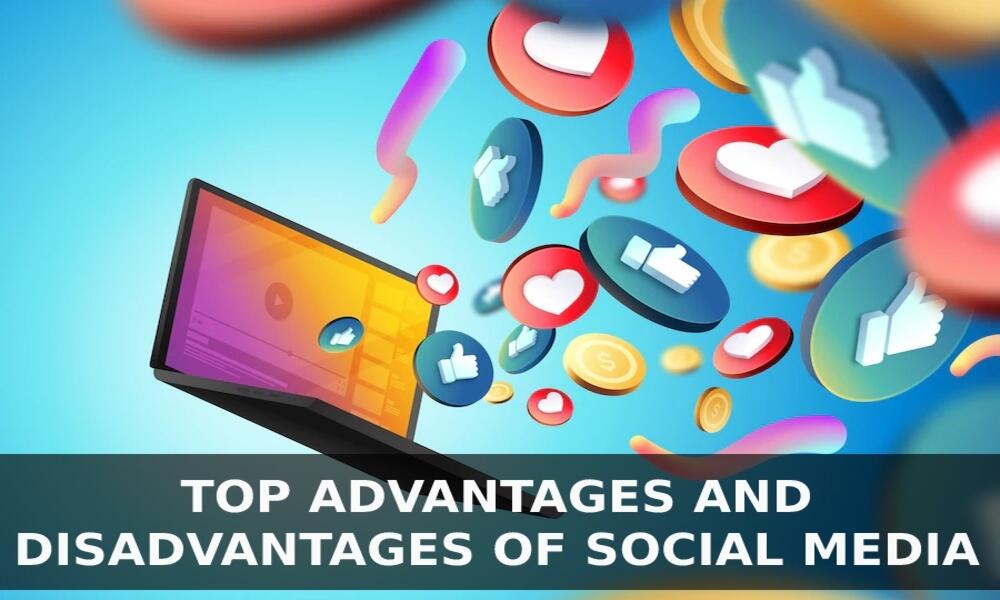11 Things You Need to Know About ‘HMU’ Meaning and Usage

Ever found yourself puzzled by a text that ends with “HMU”? Understanding "HMU meaning" is crucial, as this popular acronym is widely used in texting, social media, and digital communication. But what exactly does it mean?
Let’s break down the meaning of ‘HMU,’ how it’s used, and why it has become such a mainstay in online conversations. Keep reading to discover everything you need to know!
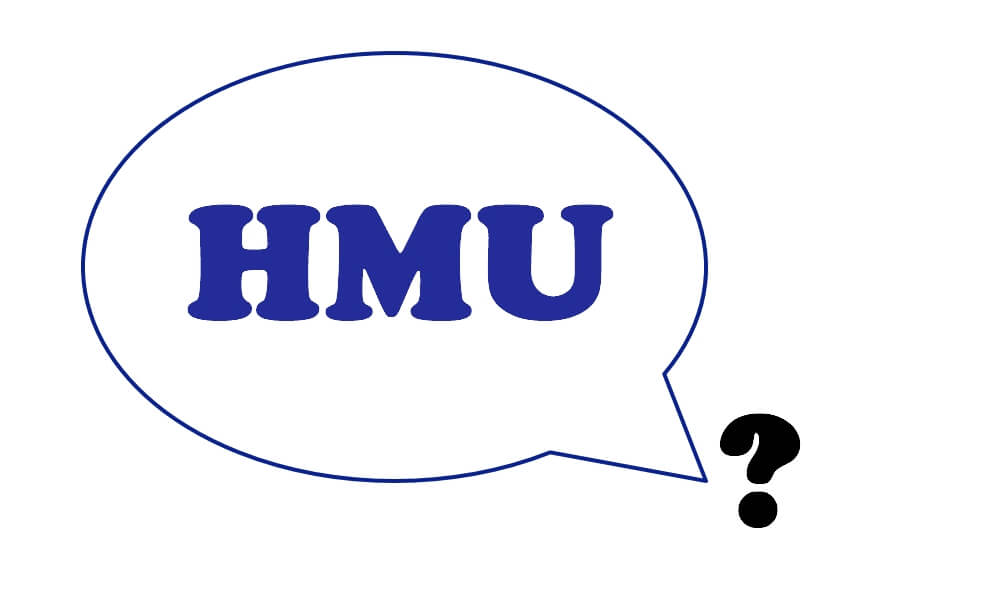
What Does ‘HMU’ Mean?
‘HMU’ has become a shorthand for “hit me up,” which essentially means reaching out to someone, either by calling, texting, or even messaging them on social media. It’s a simple, informal invitation for someone to contact you. While most commonly used between friends or acquaintances, the term has become widespread in both digital and social media contexts.
Origins of ‘HMU’
‘HMU’ has its roots in online communication, evolving from the rise of text-based communication. As messaging platforms and social media became popular, abbreviations like ‘HMU’ emerged to simplify communication. Initially used in instant messaging chats, it quickly made its way to texting and social media platforms such as Instagram, Twitter, and Facebook.
Common Ways to Use ‘HMU’
The versatility of ‘HMU’ makes it suitable for a variety of contexts. Here are a few common ways to use it:
- To start a conversation: “HMU when you’re free, let’s chat!”
- As an invitation: “I’m at the coffee shop, HMU if you want to join.”
- Casually reaching out: “If you need anything, HMU!”
- On social media: “HMU if you want to collaborate on a project!”
Different Variations of ‘HMU’
‘HMU’ isn’t always used the same way. Depending on the situation, you may see variations like:
- HMU later: A casual invitation to connect at a later time.
- HMU on Snapchat: A platform-specific request to connect via Snapchat.
- HMU when free: A request to reach out when the other person has time.
Is ‘HMU’ Only Used in Casual Conversations?
While ‘HMU’ is predominantly used in casual conversations, it’s creeping into more professional contexts. For example, business owners or content creators might use it to invite collaboration, or people might use it for networking purposes. However, its use in formal contexts still remains limited.

Why is ‘HMU’ So Popular?
The popularity of abbreviations like 'HMU' stems from the increasing demand for quick and efficient communication in our fast-paced digital world. As texting and online messaging become primary modes of interaction, users seek ways to convey messages swiftly without compromising clarity. This trend has led to the widespread adoption of acronyms and shorthand expressions.
A study by the American Psychological Association found that 99% of respondents used texting abbreviations, highlighting their prevalence in daily communication.
American Psychological Association
Additionally, research from WTOP indicates that abbreviations like 'HMU' are among the most frequently searched online, reflecting their common usage.
However, it's important to note that while abbreviations like 'HMU' facilitate quick communication, they can sometimes be perceived as less sincere. A study published in the Journal of Experimental Psychology: General found that messages containing abbreviations were less likely to receive responses, suggesting that overuse of such shorthand may impact the perceived sincerity of the message.
In summary, the appeal of 'HMU' and similar abbreviations lies in their ability to streamline communication, catering to the need for speed and efficiency in digital interactions. However, it's essential to balance brevity with clarity and sincerity to maintain effective and meaningful conversations.
The Pros and Cons of Using ‘HMU’
Using ‘HMU’ can be fun and efficient, but it has its drawbacks. Here’s a breakdown:
Pros:
- Efficiency: Short and easy to type, saving time.
- Casual tone: Makes conversations feel relaxed and approachable.
- Versatility: Can be used in a variety of settings, from personal to professional.
Cons:
- Formality Issues: Not ideal for formal or business-related conversations.
- Misunderstanding: Some might find it too casual or unclear if they’re not familiar with the term.
- Potential for Overuse: Overusing slang can make communication feel less genuine.
How to Respond to ‘HMU’
When you get an ‘HMU,’ how you respond can vary:
- If it’s an invitation: “Sure, I’ll hit you up later!”
- If it’s a casual check-in: “Got it, HMU when you’re free too!”
- If you’re unsure: “What’s up? HMU with the details.”
The key is to match the tone and context of the original message.
‘HMU’ on Social Media
On platforms like Instagram, Twitter, and Snapchat, ‘HMU’ is used frequently in posts, stories, and comments to invite engagement. Whether it’s asking followers to get in touch, collaborate, or share opinions, ‘HMU’ helps drive interaction and create a more informal connection with your audience.
Fun Facts About ‘HMU’
‘HMU’ isn’t just for texting or social media—it’s become a part of internet culture, appearing in memes, popular songs, and even in viral content. It adds to the fun and relatable nature of digital communication, often used humorously to convey the casual nature of online friendships.
FAQ About ‘HMU’ Meaning
1. What does ‘HMU’ mean in the text?
‘HMU’ stands for “hit me up,” meaning to contact or message someone.
2. Can I use ‘HMU’ in a professional context?
It’s generally informal, but it can be used in professional contexts like networking or collaboration if you want to keep it casual.
3. What does ‘HMU’ mean on Instagram?
On Instagram, ‘HMU’ typically means “message me” or “reach out to me.” It can be used in posts or stories to encourage engagement.
Tips on How to Safely Monitor Children’s Phones
If you're concerned about your child’s safety online, both official tools and SafeMyKid can help. Official methods like iPhone’s Screen Time and Google Family Link provide basic monitoring and content restrictions but lack real-time tracking of calls, messages, and apps.
SafeMyKid offers a more comprehensive solution, allowing parents to monitor calls, messages, apps, and locations in real-time. Combining official tools with SafeMyKid ensures a more complete approach to online safety, keeping you informed and ready to act when needed.

SafeMyKid Is the Right Choice to Monitor Children’s Phones
SafeMyKid is a trusted and ethical parental control tool that focuses on ensuring your child’s digital safety without violating their privacy. It offers features tailored to give parents full visibility of their child’s phone activity, all while being easy to use.
Some of the key features that make SafeMyKid stand out include:
- Real-Time Activity Monitoring: Track text messages, incoming/outgoing calls, and app usage, ensuring your child’s communications are safe.
- Location Tracking: Receive real-time updates on your child’s location, giving you peace of mind when they’re on the go.
- App Control: View and manage apps installed on your child’s phone to prevent access to inappropriate content.
- Geofencing: Set up virtual boundaries around specific areas and receive notifications when your child enters or leaves those areas.
- Web Filtering: Block access to harmful websites or content that you don’t want your child to encounter.
These features help parents stay in the loop and make informed decisions about their child's digital behavior, offering both transparency and protection.
Steps to Monitor Children’s Phones:
Step 1. Register a SafeMyKid account for free first.
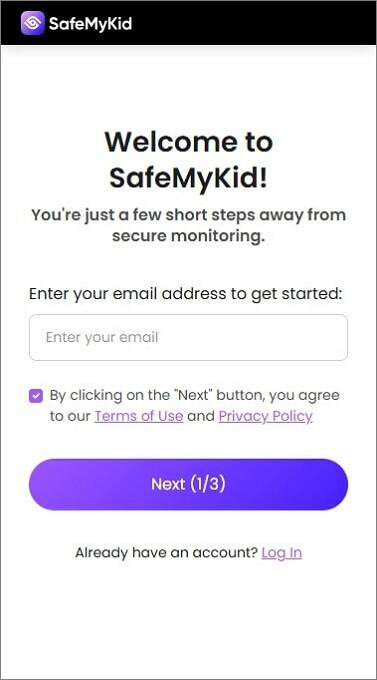
Step 2. for Android- Set up the app with your child’s phone number and configure the settings.

For iPhone- No installation is required. Simply use the cloud-based solution to monitor activities remotely.
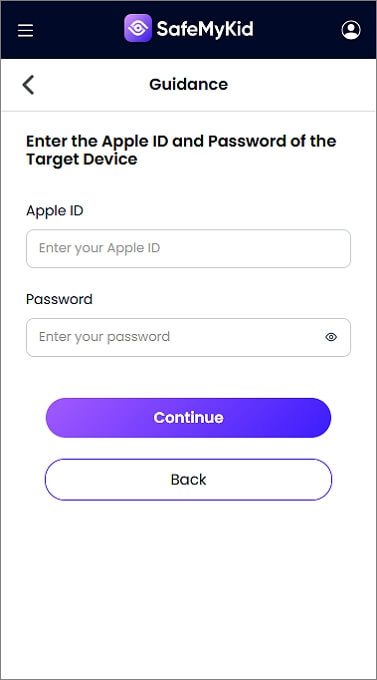
Step 3. Monitor their activities through the app’s dashboard.
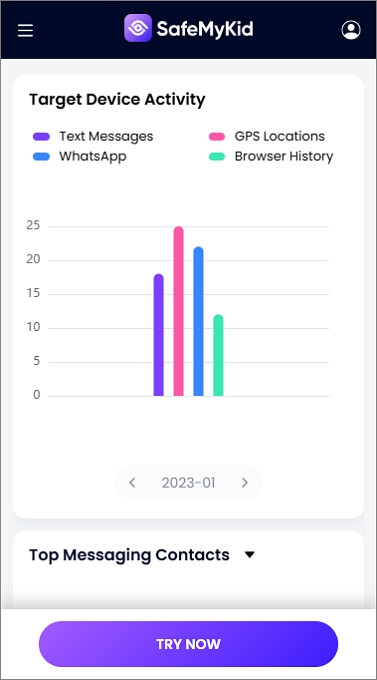
Official Methods of Monitoring Phones
Official parental control features on both iPhone and Android provide basic ways to monitor phone activity, but they lack the detailed insights needed for comprehensive safety. Here’s an overview of what each platform offers and its limitations.
iPhone Parental Controls (Screen Time)
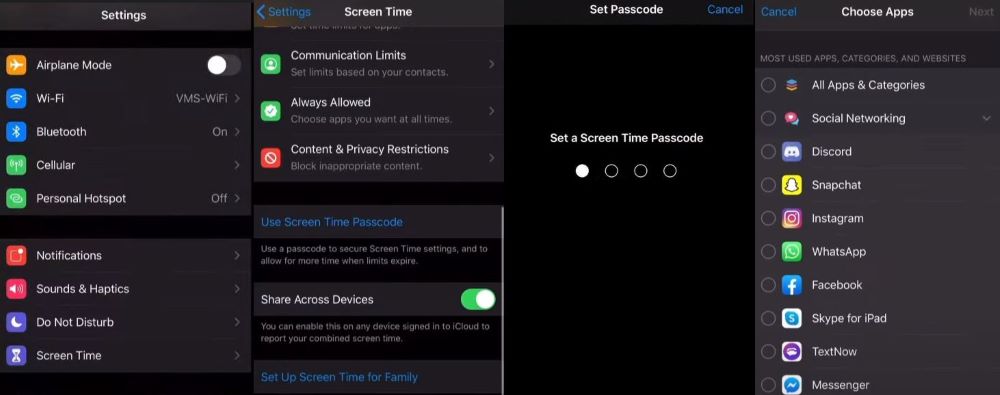
Screen Time helps parents manage app usage, set time limits, and filter content on iPhones. It’s useful for restricting access to certain apps and content, but it doesn’t allow for real-time tracking of calls, messages, or locations. Key features include:
- App Limits: Restrict access or set time limits on apps.
- Content Restrictions: Filter explicit content.
- Downtime: Set hours for phone use limitations.
While helpful for screen time management, it doesn’t provide detailed monitoring of calls or messages, which is a limitation if you want deeper insight into your child’s interactions.
Android Parental Controls (Google Family Link)
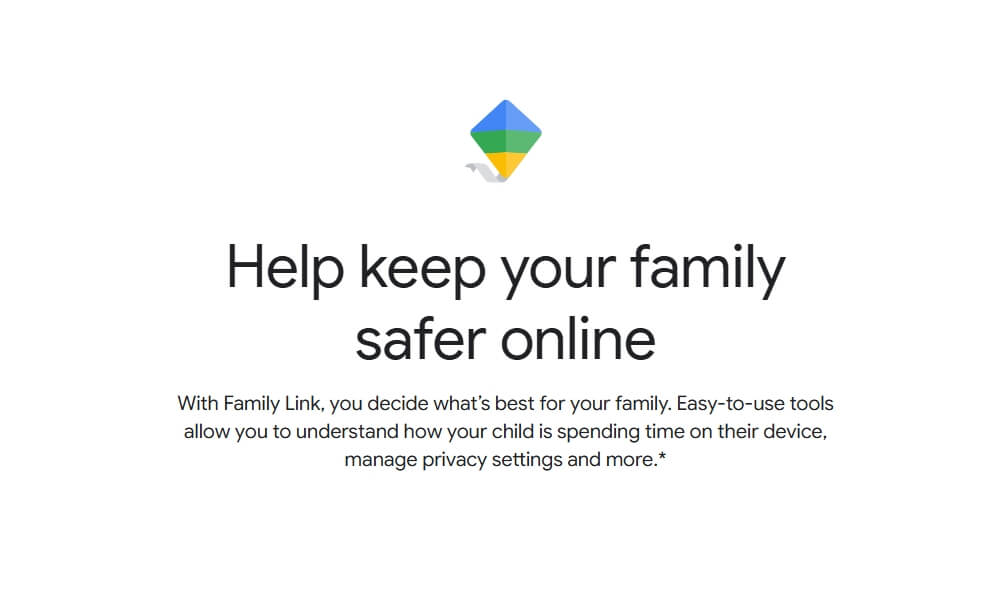
Google Family Link offers app management, activity reports, and location tracking. While it provides more robust location tracking than Screen Time, it still lacks detailed activity monitoring. Key features include:
- App Management: Approve or block app downloads.
- Activity Reports: Track time spent on each app.
- Location Tracking: View your child’s real-time location.
However, like Screen Time, it doesn’t offer detailed monitoring of calls, messages, or real-time alerts, which third-party apps like SafeMyKid can provide.
Limitations of Official Methods
While helpful for basic monitoring, official methods fall short in areas like call and message monitoring, real-time updates, and app usage details. For more comprehensive monitoring, third-party apps like SafeMyKid offer advanced solutions.
Why Third-Party Apps Are a Better Option
This is where third-party apps like SafeMyKid come in. Unlike official parental controls, SafeMyKid goes beyond limiting screen time and filtering content. It provides detailed, real-time monitoring of calls, messages, apps, and locations, offering a much more robust solution for keeping track of your child’s digital life.
Key advantages of third-party apps over official methods include:
- Real-Time Monitoring: SafeMyKid gives you instant access to calls, messages, app usage, and location tracking. You’ll know immediately if something concerning happens.
- Comprehensive Coverage: While official tools can only track app usage and limit screen time, third-party apps like SafeMyKid provide an in-depth look into your child’s online activity, including access to text messages and calls.
- Advanced Features: Features like geofencing, remote location tracking, and app control give you more power to protect your child in the digital world.
For parents who are serious about monitoring their child’s phone activity, third-party tools like SafeMyKid provide a far more complete and proactive approach than official methods. SafeMyKid’s real-time updates and detailed monitoring features make it the ideal solution for parents seeking to ensure their child’s safety online.
While official methods like Screen Time and Google Family Link are useful for setting boundaries, they don’t offer the level of insight and protection that SafeMyKid does. For comprehensive safety, consider using SafeMyKid alongside these official methods to create a well-rounded approach to digital parenting.
Conclusion
To sum it up, understanding abbreviations like “HMU meaning” is essential when monitoring your child’s phone. It’s part of the modern slang they may use to quickly communicate with friends, whether for casual chats or coordinating activities.
As a parent, it’s important to be aware of these slang terms and their meanings so you can monitor your child’s messages effectively. Just be sure to stay updated on the context in which they’re used to keep the conversation safe and secure!



